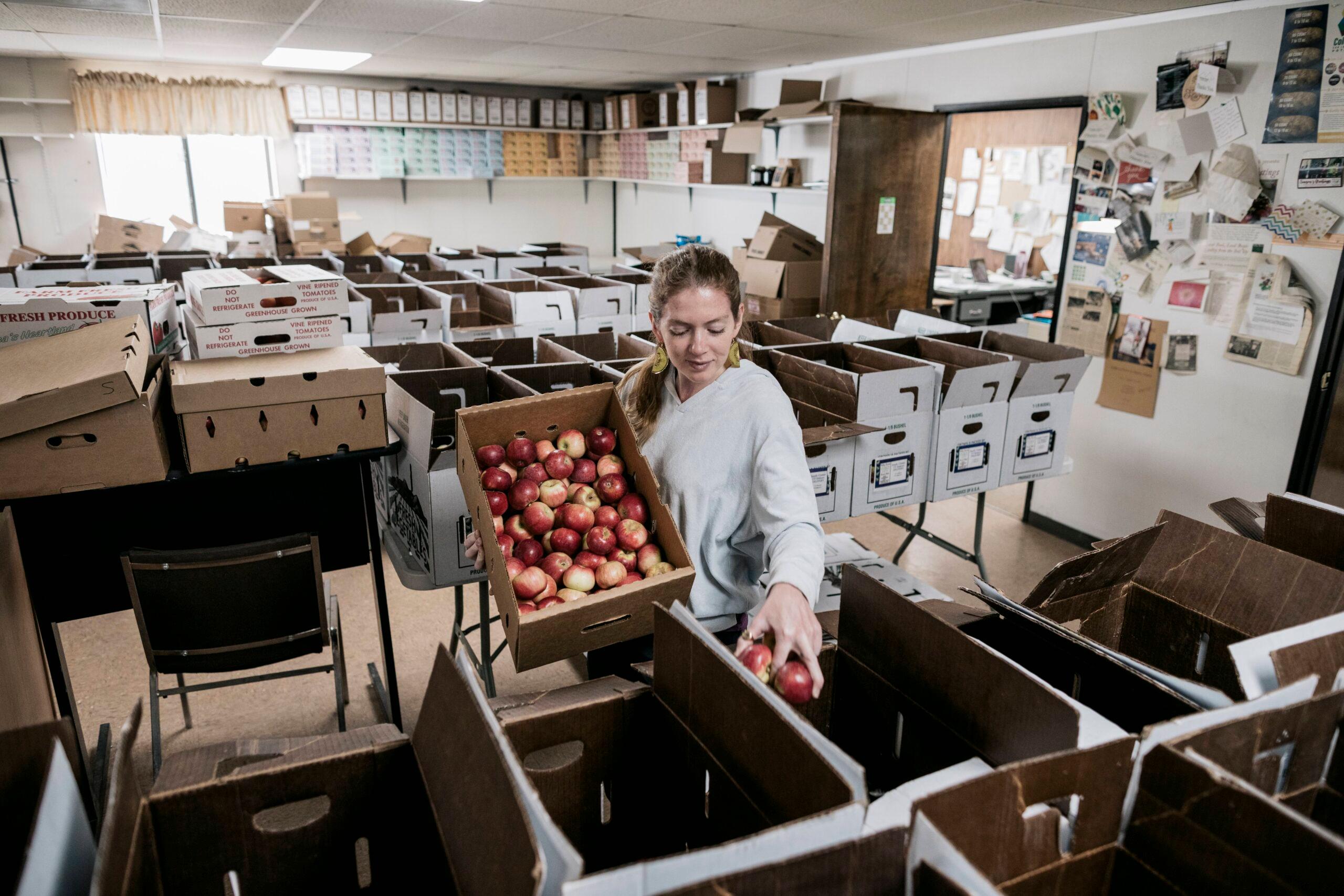
The Healthy School Meals for All program that provides free breakfast and lunch to all public school students approved by voters in 2022 has created a budget equation that isn’t adding up and is putting provisions of the measure in limbo.
Basically, there are more students in the free lunch line, which means the program is a success.
“It’s a positive thing that families and their kids are eating at schools, obviously there's a need because kids are eating,” said Brehan Riley, executive director of the Office of School Nutrition with the Colorado Department of Education.
But there is a projected shortfall of up to $24 million this year and up to $50 million next year, Riley said.
The funding mechanism for the program was a change in the income tax of people who make more than $300,000. It was expected to make more than $100 million. However, both the Legislative Council Staff and the Office of State Planning and Budgeting are projecting less revenue from the measure than was originally anticipated — but it’s unclear whether less money is being collected or simply more students are eating for free.
Based on a 20-percent increase in free lunches that school officials saw during the pandemic, the state estimated about a 25-percent increase of students under the new program.
In practice, the program has proven to be much more popular. Instead, breakfast is up 35 percent and lunch is up 31 percent. Right now schools are serving 184,000 breakfasts each day and 435,000 lunches each day. The largest increase is in the category of students who typically pay.
However, some of those students could be students who actually would qualify for free and reduced-price lunch but because of confusion over the new free meal programs, parents didn’t fill out the form.
“We don't know if there's families that would normally qualify for free and reduced, maybe they didn't fill out an application, and so they're falling into that paid category and they're eating. So, there's some things that we just don't have specific data, Riley said.
This is a big deal because for a paid breakfast meal, that state has to chip in $1.90 per meal, and $3.85 for a lunch — instead of the federal government paying for it.
The second reason for the shortfall is a jump in the consumer price index. The index is what determines what the state reimburses to schools. Officials estimated inflation of about 3.5 percent. The current inflation rate is 7.5 percent.
“So that also is more money,” said Riley. “That was not part of the original estimate because we had no idea that it was going to double like that.”
How could the shortfall be made up?
State Department of Education officials are providing several options to the joint budget committee. It’s up to the JBC to make the final call.
One option is to find other funds in the state budget to cover the gap. Another is changing eligibility requirements for who eats free meals but there isn’t data yet on what that would look like, said Riley.
A third option is to delay other parts of the ballot measure. It called for grants to boost raises for cafeteria workers, purchase food from Colorado farmers and ranchers, and support districts buying equipment for healthier cooking or to prepare more locally grown food. Those were supposed to go into effect next year.
A delay on that part of the program would save $22 million, but could leave producers in a lurch.

Al Stone, with Valley Roots Food Hub, a local food distributor in Mosca, Colorado, that connects consumers with local farmers in the San Luis Valley, said most people were behind the plan in the beginning.
“We were helping encourage and advertise that this was coming down the pipeline for our farmers and saying that it was going to be an additional reliable market for them because traditionally, there have been so many barriers to get into institutions,” Stone said.
But the shortfall has Stone concerned, especially for the producers she knows who have already planted crops intended for the lunch line in Colorado schools — lettuce for salad bars and broccoli. Or those who bought seeds and additional equipment and hired staff.
Stone pointed to a greenhouse grower in La Junta who supplies lettuce and kale for schools.
“He's thinking about building another greenhouse to help reach the demand. And if he doesn't have this reliable market, he's not going to have the funds to build that secondary greenhouse,” Stone said.
But the loss of school districts paying for local food — that shortfall that the JBC will have to confront during its meeting Feb. 29 — would have a big impact on Colorado growers, she said.
“We might have people losing their farms over there. It's that kind of dire,” she said.
Brian Kearney, with Kitchen Sync Strategies, is a broker with the East Denver Food Hub, an aggregator that connects farmers to K-12 schools, hospitals, corporate dining institutions and universities.
He said the elements of the ballot measure were meant to work together, providing an opportunity for the whole state. As more kids eat healthy food, more would need to be produced, requiring more workers to prepare it.
“This is an obvious investment in the kids of Colorado,” he said. “But it was also an investment in local agriculture and our service workers who traditionally have been folks that have been overlooked or undervalued.”
Kearney said hearing about the shortfall hurts the trust he has established with producers.
“Farmers put seed in the ground for this program, and it's been hard to go back and speak with those producers and tell them that we don't have an answer for what is actually going to occur, and we just have to sit and wait because unfortunately that's not how nature works.”
How to sustain Healthy School Meals for All
Education department officials will ask to hire a contractor to see whether Colorado is maximizing federal funding for meals.
For example, to participate in the Healthy School Meals for All program, eligible schools must enroll in the Community Eligibility Program. Originally, schools in which 40 percent of the students are enrolled in federal programs like food stamps or Medicaid qualified, and those schools got federal money for meals. The federal government just lowered the threshold to 25 percent. Officials want to know how much more federal money that could bring in next year.
“What does it look like when a school is at 25 percent versus a school at 40 percent for the eligibility factor?” said Riley. “We don't know enough if it's every school saving us money or just certain schools saving us money. And so we really need to bring in some expertise to dig into that.”
Finally, the state monitors free and reduced-price lunch applications only to a degree. It could intensify monitoring to make sure districts are making the best effort possible to get families to hand in free and reduced lunch forms.
The popularity of the program could continue to grow next year. Riley said other states with similar universal lunch programs — Michigan, Massachusetts, Minnesota, New Mexico, and California — have all seen participation numbers continue to rise even into the second year of the program.
Riley assures school districts they will get their full reimbursements for money spent on meals this school year. The department will advise budget analysts that because new numbers are coming in on a weekly basis, “tweak as needed now until we really have a full idea of trends and final cost for the meals.”









